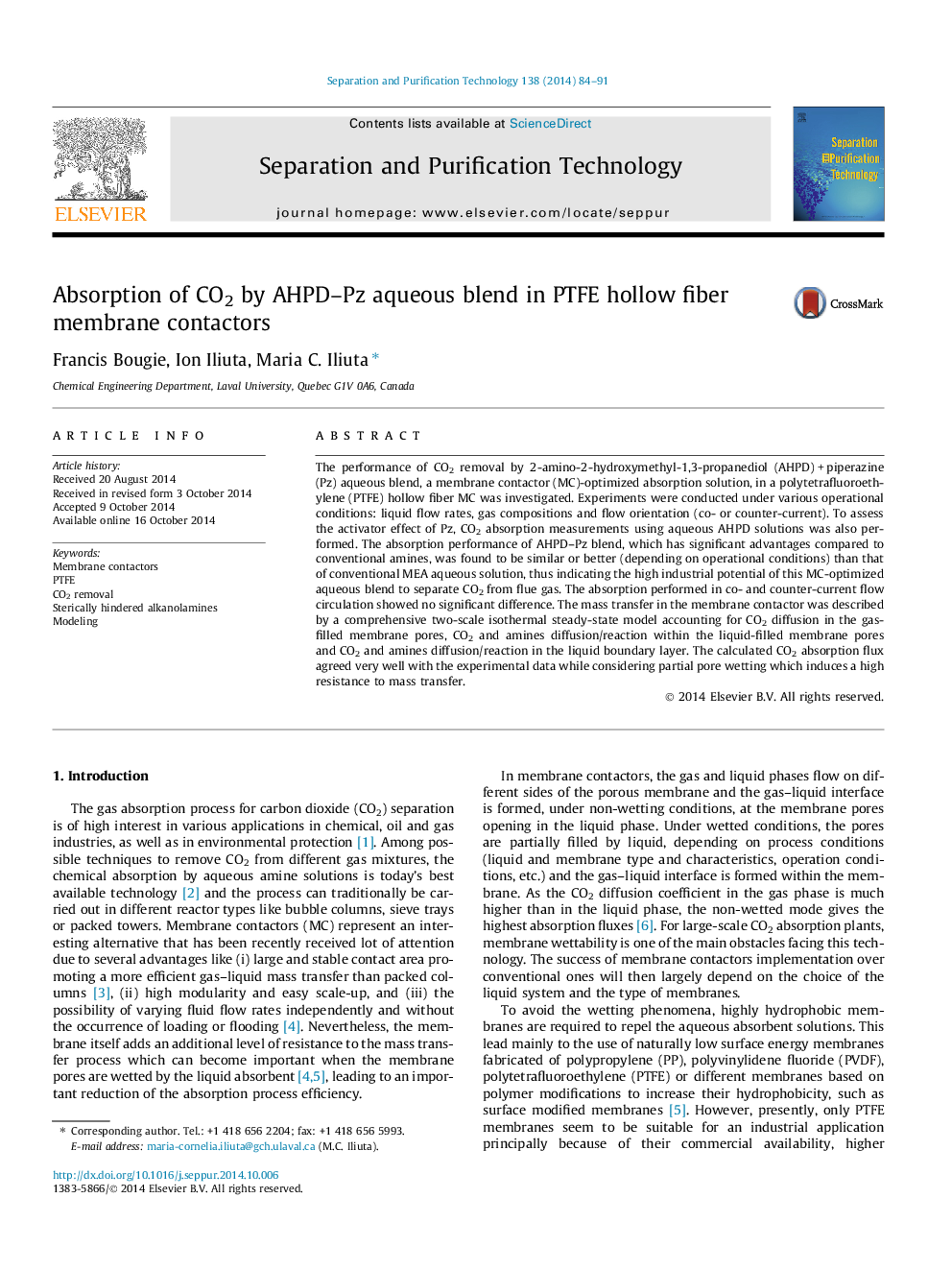| Article ID | Journal | Published Year | Pages | File Type |
|---|---|---|---|---|
| 640854 | Separation and Purification Technology | 2014 | 8 Pages |
Abstract
The performance of CO2 removal by 2-amino-2-hydroxymethyl-1,3-propanediol (AHPD)Â +Â piperazine (Pz) aqueous blend, a membrane contactor (MC)-optimized absorption solution, in a polytetrafluoroethylene (PTFE) hollow fiber MC was investigated. Experiments were conducted under various operational conditions: liquid flow rates, gas compositions and flow orientation (co- or counter-current). To assess the activator effect of Pz, CO2 absorption measurements using aqueous AHPD solutions was also performed. The absorption performance of AHPD-Pz blend, which has significant advantages compared to conventional amines, was found to be similar or better (depending on operational conditions) than that of conventional MEA aqueous solution, thus indicating the high industrial potential of this MC-optimized aqueous blend to separate CO2 from flue gas. The absorption performed in co- and counter-current flow circulation showed no significant difference. The mass transfer in the membrane contactor was described by a comprehensive two-scale isothermal steady-state model accounting for CO2 diffusion in the gas-filled membrane pores, CO2 and amines diffusion/reaction within the liquid-filled membrane pores and CO2 and amines diffusion/reaction in the liquid boundary layer. The calculated CO2 absorption flux agreed very well with the experimental data while considering partial pore wetting which induces a high resistance to mass transfer.
Related Topics
Physical Sciences and Engineering
Chemical Engineering
Filtration and Separation
Authors
Francis Bougie, Ion Iliuta, Maria C. Iliuta,
